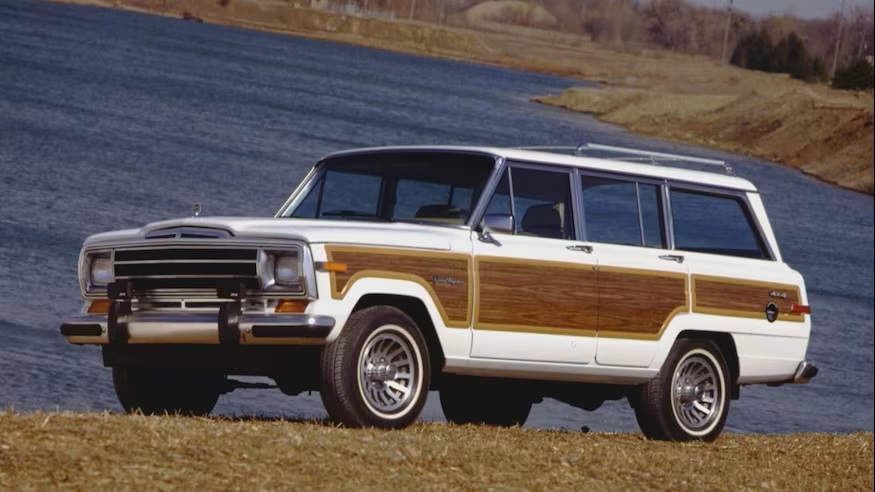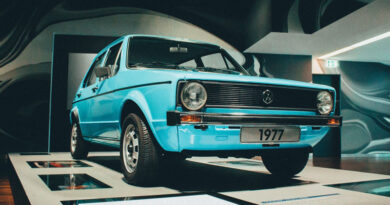
Look Back At the Original Jeep Grand Car, Pioneering Luxury Vehicle
The 1984–1991 Grand Wagoneer set the template for today’s fanciest family vehicles.
Although luxury trucks are a key profit center for modern automotive manufacturers, there was a time when only a single brand on the American market was brave enough to make the leap from ski station to valet station. It was the early ’80s when AMC decided to go all-in on an aging platform by transforming its already decades-old Wagoneer into the Grand Wagoneer and open up an entirely new segment for U.S. buyers. The Jeep Grand Wagoneer beat the (still Spartan but nevertheless high-priced) Range Rover to the American market by a handful of years, and while Land Rover was able to outlast its underfunded rival in the long run, as contemporaries there was no question who was first, and in the minds of many sport-utility fans, who also did it better.
Ancient Roots
A bit of backstory first. The original Wagoneer, internally known as the Full-Size Jeep, FSJ, or SJ, debuted in 1963, and would soldier on for decades with only minor mechanical tweaks. The first hints that the truck had the potential to woo an upscale clientele came with the Super Wagoneer, which then Jeep owner Kaiser released in 1966. Packed with luxury gear completely foreign to anything trucklike at the time (power brakes, a high-end radio, tilt steering, power steering), it wasn’t long before the model was commanding nearly three times the average transaction price of an entry-level automobile.
Once AMC purchased Jeep in 1970, the product line coalesced around the more basic Cherokee and its more family-friendly Wagoneer variant. Despite repeated urging from AMC dealers to increase the price point on the latter—due to the surprisingly high household incomes of buyers attracted to the truck’s blend of on-pavement comfort and rugged go-anywhere image—each truck would stay in its lane for the next several years.
More Than Just Wood

AMC began toying with the idea of another plush Wagoneer model towards the end of the ’70s with the Limited trim, the model shown above and among the first Wagoneers to go full woody along with the earlier 1970s Custom. More important, it showed customers would indeed be willing to continue feeding their great outdoors fantasy even if the truck’s asking price was raised to account for a quieter, smoother experience and a heap of extra modern conveniences.
By 1982, the Limited had made serious headway in terms of sales, and AMC piled on gear such as leather buckets and trim, a full interior update over the standard Wagoneer/Cherokee, air conditioning, and a list of features and electric assists that wouldn’t have looked out of place in a contemporary Cadillac. Unfortunately, it was also a time of financial crisis for the last remaining independent American carmaker, and with bills stacking up and partner/investor Renault increasingly calling the shots, the decision was made to condense the Full-Size Jeep to a single model. This would drive entry-level buyers to the all-new compact unibody XJ Cherokee platform and keep the Wagoneer’s golden goose laying the most profitable eggs possible.
Thus the Jeep Grand Wagoneer nameplate arrived as a 1984 model, and it brought with it most of the gear that had come to define the earlier Limited. Most examples were powered by a 5.9-liter V-8 (an original AMC design) good for 140 horsepower and 280 lb-ft of torque, although a significantly less mighty and marginally more frugal 4.2-liter straight-six was also offered for a time. Shift-on-the-fly four-wheel drive remained standard, as did wood trim (it could be removed as an option only in 1984) and new narrow, vertical tail lights that no longer wrapped to the rear fenders. 1986 would bring the final styling update—basically just a Jeep-logo hood ornament and a new grille—and the interior would also be more thoroughly modernized with things like headrests, better climate control a redesigned gauge cluster, and a new steering wheel.
Initial sales of the Grand Wagoneer were solid, with an asking price of just under $19,000 placing it in the same category as family-oriented wagons from the likes of Volvo and far above plainer contemporary trucks like the GMC Jimmy and Ford Bronco. Profits on the vehicle remained enormous, with nearly a third of the asking price representing gravy to Jeep.
Chrysler would purchase AMC in 1987, but the Grand Wagoneer would stay the course, with post-purchase 1988 models essentially a match for their predecessors outside of a newly available sunroof, and keyless entry, an overhead console with map lights, and a rear wiper becoming minor additions to the equipment list in 1989. The Pentastar would bring with it a number of under-the-skin improvements, however, such as improved anti-corrosion measures, better overall assembly of the vehicle, and the standardization of certain components that had previously been sourced from a laundry list of car companies.
Last Of Its Breed

The Grand Wagoneer would sail through its twilight years firmly entrenched as the favorite daily driver among the Martha’s Vineyard and Texas oil patch set. By the time the truck was discontinued after 1991 (a victim of encroaching safety standards and its own ineluctable single-digit fuel economy), the Jeep was pulling in buyers whose median income hovered around $200,000 in today’s dollars.
That’s an impressive feat for one of the least technologically sophisticated vehicles on the market. Indeed, the Grand Wagoneer had to rely almost entirely on its character to drum up customers, and given its respectable 4×4 reputation and throwback design—the longest unchanged body style from any American manufacturer, the basic, Brooks Stevens-penned sheetmetal debuted for 1963—it’s easy to see why those with money to burn could overlook the Jeep’s thirst for fuel and floaty handling in exchange for exceptional on-road comfort and all-around practicality.
When the next wave of luxury SUVs hit U.S. dealerships at the end of the 1990s—led by vehicles such as the Mercedes-Benz M-Class and the Lincoln Navigator—the focus would shift from delivering a truly rugged platform to maximizing interior passenger and cargo room while softening the ride to be as carlike as possible. As long as the truck in question looked the part, buyers were willing to give premium sport-utilities a pass on the off-road capabilities they were highly unlikely to ever require on the daily commute.
The Jeep Grand Wagoneer may have demonstrated the extremely profitability of the luxo-truck concept, but with a few exceptions it remains in a class of one. Unduplicated even decades later, it is now being rediscovered by a new generation of fans seeking a classic respite from the same/same people movers sitting on dealer lots across the country. For its part, current Jeep owner Fiat Chrysler plans to revive the nameplate on the 2022 Grand Wagoneer, which should only brighten its iconic predecessor’s star.


